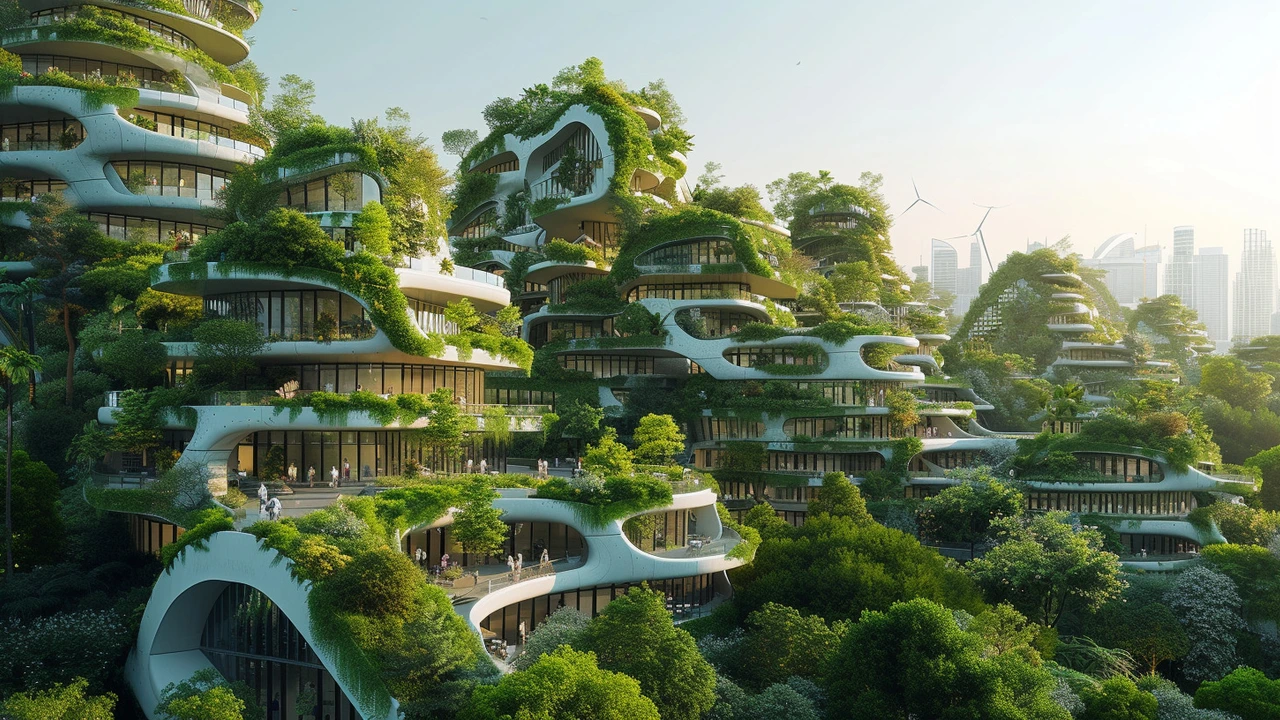As a passionate architect aficionado and a tree-hugger at heart, I want to delve into the intersection of beauty and sustainability in architecture. Let's traverse this fascinating juncture where aesthetic appeal meets environmentally-conscious designs. Through my post, we will explore how architects today are creating buildings that are not only visually striking but also reduce their environmental footprint. It's a realm where style coexists with substance, ensuring our built environment contributes toward a greener future.
Environmentally-friendly design: practical moves that actually work
Buildings account for a huge share of emissions — roughly four in ten tons of global CO2. That makes design one of the fastest, most effective levers to cut a building’s footprint. If you want real impact, aim for smart choices that save energy, cut embodied carbon, and keep spaces comfortable without drama or expensive gimmicks.
Key strategies you can use today
Start with passive design: orient rooms to capture winter sun and shade summer heat, size windows for daylight without overheating, and use insulation that stops heat flow. Passive moves reduce energy needs before you add tech.
Choose low-embodied-carbon materials. Timber from well-managed forests, recycled steel, and low-carbon concrete mixes cut the upfront carbon hit. Ask suppliers for Environmental Product Declarations (EPDs) so you can compare products by real data.
Invest in efficient systems: a properly sized heat pump, efficient ventilation with heat recovery, and LED lighting give big savings. Pair systems with simple controls and sensors so they run only when needed.
Add renewables where it makes sense. Solar PV often pays back faster now than a decade ago, especially on sunny roofs. If on-site panels aren’t possible, consider community solar or green tariffs to lower operational carbon.
Think water and landscaping together. Low-flow fixtures, rainwater capture, and drought-tolerant plantings shrink demand and cooling loads. Green roofs and trees reduce urban heat islands and help stormwater management.
Practical retrofit moves and budgeting tips
Retrofits give the biggest emissions wins because they avoid demolition. Start with a simple energy audit to find the easiest wins: air-sealing leaks, upgrading insulation, replacing a failing boiler with a heat pump, or switching to a smart thermostat.
Prioritize upgrades by cost per ton of CO2 avoided. Often air sealing and lighting pay back fast and cut emissions quickly. More costly moves — major façade changes or full-window replacement — can wait until you combine them with other renovations.
Use local, proven contractors. A tight envelope needs good workmanship; poor installation can erase the benefits of high-performance materials. Ask for references and photos of similar projects.
Look into incentives and certifications. Many regions offer rebates for heat pumps, insulation, or solar. Certifications like LEED, BREEAM, or Passive House help guide decisions and can increase resale value — but pick the program that fits your project size and budget.
Finally, create a simple checklist before you build or renovate: assess site orientation, set realistic energy targets, choose low-carbon materials, plan for ventilation and solar, and budget for monitoring. Monitoring after handover shows real performance and informs future choices.
Environmentally-friendly design doesn’t require extreme aesthetics or huge budgets. Start with the basics, measure results, and improve over time. Small, well-chosen steps add up to big savings for the planet and for your bills.

